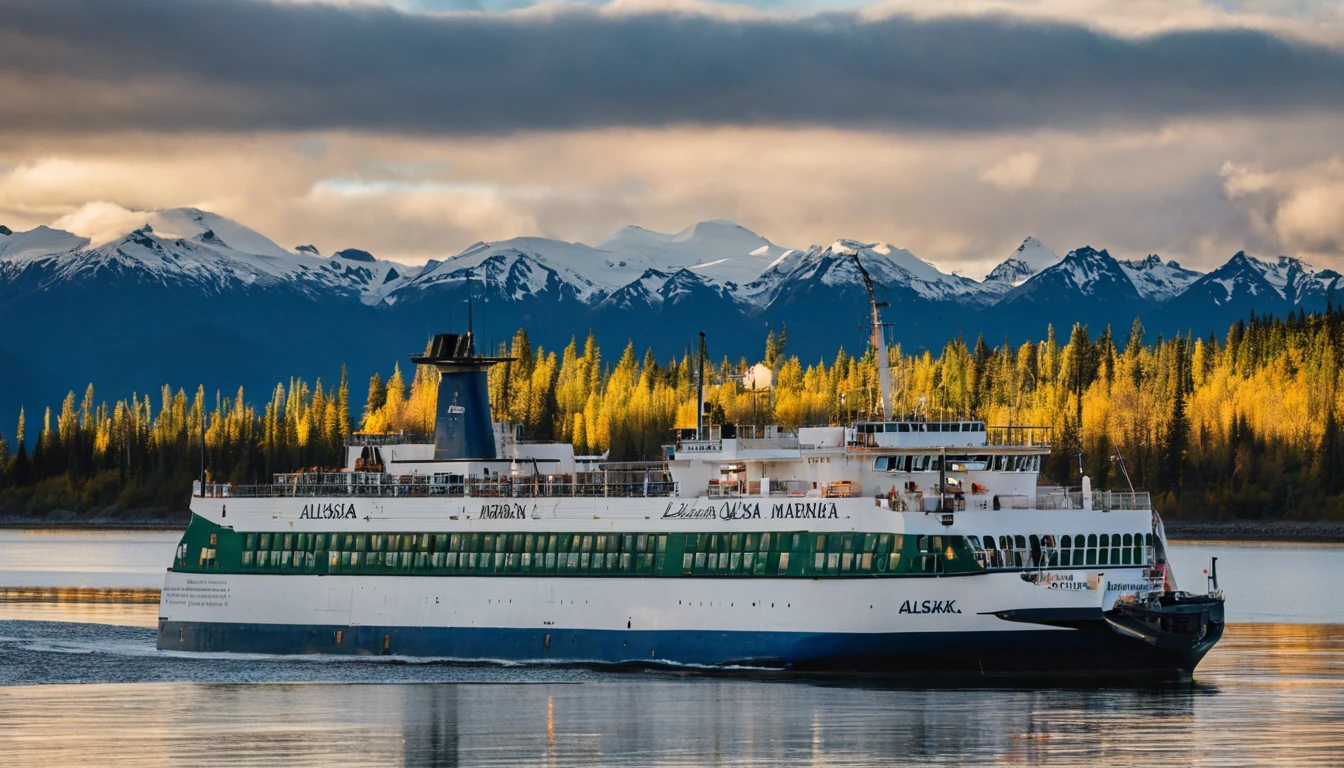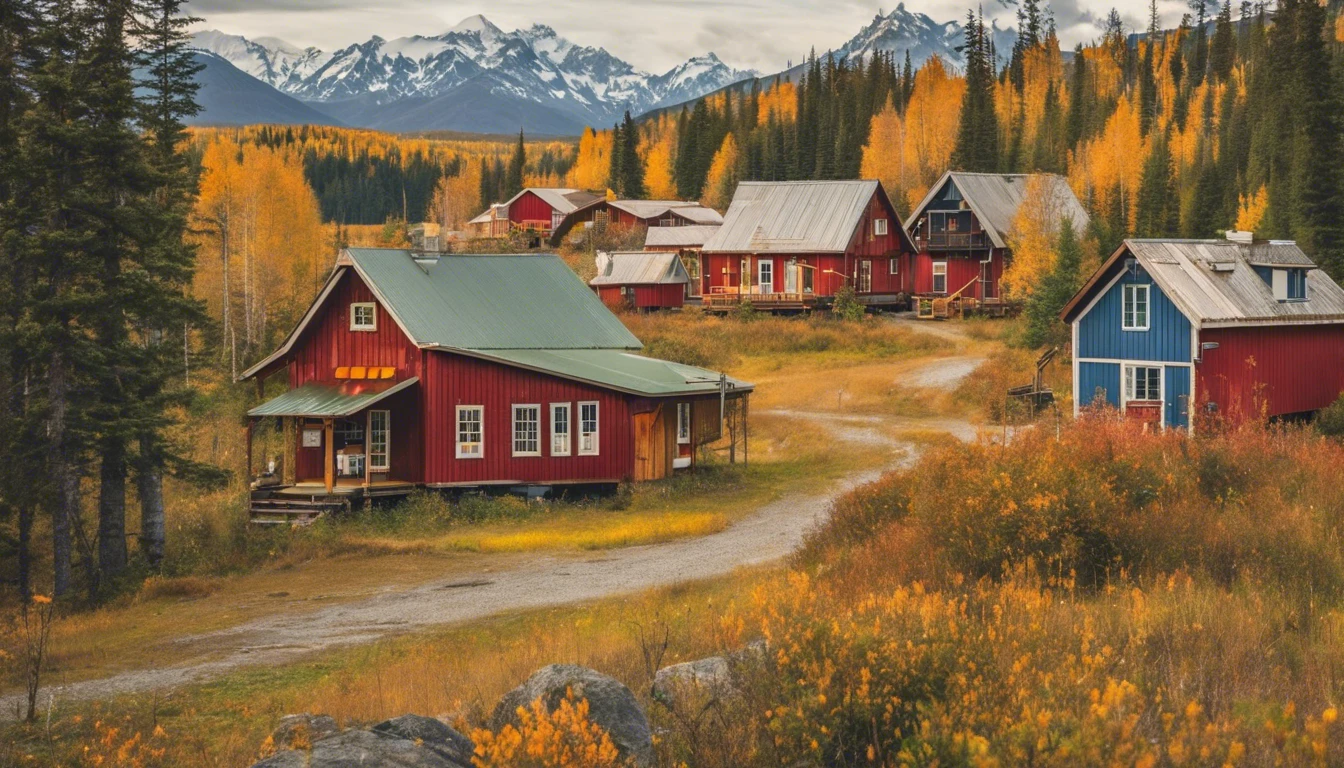What is the cheapest month to move to Alaska?
The cheapest months to move to Alaska are after May 15th and before September 15th. During this period, the weather is milder and moving services are less busy, potentially allowing for better deals.

The cheapest months to move to Alaska are after May 15th and before September 15th. During this period, the weather is milder and moving services are less busy, potentially allowing for better deals.

If you're looking to save some money on your move to Alaska, timing can play a big part. The cheapest months to move to Alaska are usually after May 15th and before September 15th. There are a few reasons why these dates give you the best bang for your buck.
Firstly, the weather during these months is relatively mild. In contrast to the harsh Alaskan winters that can make moving difficult and expensive, the late spring and summer months offer more manageable conditions. This can help keep your moving costs down as you won't need to worry about extra expenses like winter tires or heating equipment.
Secondly, moving services tend to be less busy during these periods, meaning you might be able to negotiate a better deal. With fewer people moving, you could have a better selection of dates and times to choose from, allowing you to plan your move more efficiently.
Additionally, choosing the cheapest ways to move to Alaska can further help you save costs. These include driving or taking a bus, depending on your distance, belongings, and personal preferences. For those moving with minimal items, flying can be a cost-effective option, particularly between May 15th and September 15th to avoid winter.
Driving from the East coast to Alaska, while long and taking a week or more, is feasible and provides an opportunity to experience the vast and remote landscapes. If your destination is connected to the road system, driving vehicles while fully packed via the AlCan is recommended for its cost-saving benefits. For household goods, using a trailer service that trucks or barges items to Alaska is common, costing about $750 per linear foot with deliveries taking 8-9 weeks. A practical option includes buying a cargo trailer in the Lower 48 and selling it upon arrival in Alaska, which can be economically favorable.
When it comes to housing, it's worth noting that there's a shortage and high costs, especially for pet-friendly options. Rent for a studio or one-bedroom apartment can amount to at least $800-$900 monthly. This is a significant consideration, especially if you're moving over the summer and need short-term accommodation. During this period, even car rentals can be particularly expensive, surpassing a hundred dollars a day. However, despite the high cost of living, the extended daylight hours allow for ample exploration time, which can be a unique benefit of moving during this period 🔗.
Finally, moving during these months means you'll have some time to settle into your new home before winter sets in. This can be especially beneficial if you're not used to Alaskan winters, as it gives you a chance to prepare both physically and mentally.
To summarize:
Remember, moving is a big task and can be stressful. But with a bit of planning, you can make the process smoother and less expensive. So, if you're flexible with your moving dates, consider aiming for late spring to early fall to make your move to Alaska as cost-effective as possible.

Alright, so let's talk about moving to Alaska with minimal belongings. Now, this approach is great if you're on a tight budget or just prefer the minimalist lifestyle. And yes, it's entirely possible to do so!
First things first, you'll need to book a cheap airline ticket. Keep an eye out for deals or offers from various airlines. Typically, you can find reasonably priced tickets to Anchorage, the largest city in Alaska. Besides, Anchorage has all the amenities you’d need to start your new life in Alaska.
Remember, the key here is to travel light. You want to bring as few belongings as possible to save on luggage fees and transportation costs. Here are some tips on how to do that:
Prioritize essential items: Bring only what you can't live without. This includes important documents, essential clothing, personal hygiene items, and some sentimental possessions.
Sell or donate what you don't need: If you have items that aren't necessary, consider selling them before you move. Not only will this lighten your load, but it can also give you some extra cash for your move.
Buy what you need when you arrive: Keep in mind that you can always purchase items when you get to Alaska. It might be more cost-effective to buy certain things, like furniture, once you're there rather than hauling them across the country.
Consider shipping options: If there are items you can't part with but can't carry with you, look into shipping options. It might be more affordable than you think, especially for non-urgent deliveries.
Some people who have made the move suggest driving your own vehicle up the AlCan road if your destination is accessible by road. This approach not only offers a sense of adventure but also allows you to transport as many belongings as possible within your vehicle, potentially saving on shipping costs. Another option is to use a service that charges per linear foot for transportation, allowing you to pack valuable or heirloom items efficiently. Some have even considered buying a cargo trailer in the Lower 48 and selling it after the move, which can be economically favorable but logistically challenging. Moving from the Lower 48 to Alaska
With a bit of planning and a minimalist approach, it's entirely possible to move to Alaska with a cheap ticket and minimal belongings. Once you've landed in Anchorage, you might also consider moving to Juneau, the capital of Alaska. Juneau offers a wide range of family-friendly neighborhoods, each with their unique characteristics and living conditions. For example, the Mendenhall Valley neighborhood has seen a population growth of 8% since 2000 and boasts a median income of $79,371. It's a suburban environment that appeals to families seeking outdoor adventures and a tight-knit community. The downtown area of Juneau, on the other hand, offers urban vibrancy with a diverse community and high education level. It's home to 31,685 residents, with 95.4% being high school graduates or higher, and a median household income of $95,711. There are also more serene options like Douglas, a small island community of approximately 3,000 residents known for its high cost of living and excellent education system. Each neighborhood offers distinct advantages for those considering a move to Juneau, catering to a range of preferences from urban vibrancy to serene waterside and island living. Juneau's family-friendly neighborhoods
While moving to Alaska may seem daunting at first, as long as you plan and budget accordingly, it is feasible. According to movebuddha, the cost of living in Alaska is slightly higher than the national average, but it's still manageable, particularly if you're moving from a high-cost area. You can also look into various programs that the state offers, such as the Permanent Fund Dividend, which pays residents a yearly amount just for living there.
And once you've landed in Anchorage with a little money, you can start exploring your new home and gradually build up your essentials. Now, how exciting does that sound?

If you're planning to bring your car along with you to Alaska, one cost-effective way to do so is by using the Alaska Marine Ferry system. This system conveniently starts from Prince Rupert in British Columbia and ends in Haines, Alaska. Once you've reached Haines, you can then drive the rest of the way into the heart of Alaska.
Here's a bit more about how this works:
First, you'll need to drive to Prince Rupert. This beautiful coastal city is located in British Columbia, Canada. It's accessible from various major cities in both Canada and the US, making it a convenient starting point for your journey.
Once you've reached Prince Rupert, you can load your car onto the Alaska Marine Ferry. This ferry is designed to accommodate vehicles, so you won't need to worry about leaving your car behind.
The ferry will then take you all the way to Haines, Alaska. This journey can take around 36 hours, so be sure to bring something to keep you entertained during the trip. According to some passengers, the ferry offers accommodations such as cabins or staterooms and options for deck camping or using lounge areas. Travelers' choices depend on trip duration, need for sleep, equipment brought, and affordability.
Once you've reached Haines, all that's left is to drive into Alaska. From Haines, it's approximately a 650-mile drive to Anchorage, Alaska's largest city. However, the Alaska Marine Highway System also offers a ferry route from Bellingham, WA, to locations in Alaska, serving as an alternative for reaching various Alaskan destinations given that Anchorage is inland and does not have direct ferry service. The journey from Bellingham through the Inside Passage to Haines, AK, is detailed, highlighting a trip duration of 59.5 hours, with Haines being 800 miles from Anchorage.
By using the Alaska Marine Ferry system, you can save on the costs of shipping your car separately. Plus, you'll get to enjoy a scenic ferry ride and an epic road trip into Alaska. Just remember to check the ferry schedule and make your booking in advance, as spots can fill up quickly during peak travel times.
For those planning to move to Alaska between October and February, the ferry to Haines is the most viable route as it allows for subsequent travel through Canada. From March to September, the cross-gulf ferry from Bellingham to Whittier is available, helping to avoid Canadian travel. However, please note that border regulations require a valid passport for anyone over 18, while children under 18 traveling with parents do not need passports. Active duty military being transferred to Alaska can use their Transfer Orders instead of a passport. FerryTravel provides more information about traveling with pets and firearms, as well as DUI convictions which are considered a felony by Canada.
The Alaska Marine Highway System's Summer 2024 schedule is now available for booking. However, it is worth noting that there are currently no Prince Rupert or cross-gulf sailings due to a shortage of licensed mariners. The customer service center operates Monday to Friday, 8:00 am-3:00 pm. Check-in times vary by departure location, and food and beverage services are provided, with certain vessels offering full dining options. The onboard sights include glaciers, fjords, forests, and marine wildlife. Walk-on passengers can bring up to 100 pounds of baggage, and cabins offering basic amenities are available for booking. Public restrooms and showers are accessible, with parking restrictions at terminals. State employees, including crew members, cannot accept tips. Travelers to Whittier are advised to check the tunnel schedule. More details can be found on the Alaska Marine Highway's official website.
As you plan your move, you might consider settling in one of Juneau's family-friendly neighborhoods. For instance, Mendenhall Valley has seen a population growth of 8% since 2000, with a population density of 2,395.50 people per mile, and a total population of 10,387. The area has a 19% annual residential turnover, and the median income is reported to be $79,371. Downtown Juneau, with a population of 31,685 as of July 1, 2022, offers a median value of owner-occupied housing units at $404,600 and a median household income of $95,711. Alternatively, Auke Bay has seen a significant population growth of 38% since 2000 and boasts a median income of $98,454. If you're looking for convenience and accessibility to amenities, Lemon Creek might be a good fit, with a median real estate price of $416,181 and an average rental price of $1,989. Each of these neighborhoods offers its unique charm and advantages, so it's worth taking the time to research and find the one that suits your lifestyle and budget the best. City Moving provides a detailed overview of these neighborhoods to help you make an informed decision.

The Alaska Highway, also known as the "Haul Road" or the "Alcan Highway," represents a significant engineering achievement of WWII, drawing comparisons to the Panama Canal's construction🔗. This route spans approximately 1,390 miles (2,237 kilometers) from Dawson Creek, British Columbia, Canada, to Fairbanks, Alaska. It is mostly paved and traverses British Columbia, Yukon, and Alaska, offering a year-round route through these rugged landscapes🔗.
Travelers will traverse around 480 miles of mostly gravel road, encountering potholes, wildlife, and some of the most remote areas on Earth, including the Brooks range and the North Slope🔗. This journey is not for the faint-hearted, but it offers stunning views and a unique sense of adventure.
Key stops along the way include Coldfoot, which provides basic amenities like gas and food, and the Arctic Circle monument. The outpost community of Deadhorse serves as a gateway for oil field employees and tourists, offering basic accommodations and unique experiences like a tour of the oil fields and the chance to dip into the arctic ocean🔗.
Here are some additional tips to keep in mind when planning this journey:
Driving the entire Alaska Highway is an adventure in itself, offering a unique opportunity to connect with nature and enjoy some of the most stunning landscapes on Earth. However, it's essential to be prepared for the journey, from ensuring your vehicle is in excellent working condition to preparing for the higher costs of gas and auto repairs🔗. Plan ahead, be prepared, and your journey to Alaska will be one to remember🔗.

Moving to Alaska can be an exciting adventure, but it's not without its costs. One of the smartest ways to ensure a smooth transition is to secure a job that covers moving costs and accommodation. But how do you go about doing that? Let's break it down.
Research Job Opportunities
Start by researching available job opportunities in Alaska. The state is known for industries like fishing, oil and gas, healthcare, tourism, and even construction and education. These sectors often have job openings and some even offer relocation packages, including moving cost reimbursement, temporary housing, sign-on/hiring bonuses, assistance in finding long-term housing, shipment of household goods, travel expenses for house-hunting, and pet relocation assistance. Websites like Indeed, Glassdoor, and the Alaska Department of Labor and Workforce Development can be great resources for job hunting. You can also leverage online job boards, attend remote job fairs, work with recruiters specializing in Alaska, network, and consider short-term gigs.
Negotiate Your Relocation Package
If you get a job offer, don't forget to negotiate your relocation package. This can include moving costs, temporary housing, and even job search assistance for your spouse. Remember, everything is negotiable. It's important to understand the details and conditions of the relocation packages and consider the cost of living in Alaska when accepting such job offers.
Understand the Cost of Living
Before accepting any offer, make sure you understand the cost of living in Alaska. While some areas are quite affordable, others can be expensive. Factor in costs like housing, groceries, utilities, and transportation. Websites like Numbeo can provide a good estimate of these costs.
Local Financial Incentives
Certain cities in Alaska, like Anchorage, have programs designed to financially assist individuals with relocation. For instance, the Anchorage Remote Worker Incentive Program offers benefits up to $1,000 in reimbursements. Furthermore, Alaska offers a unique financial benefit through the Alaska Permanent Fund Dividend. Established in the early 1980s, residents, after a full year of residency, receive a share of the state's oil profits. This dividend varies annually, originally around $400, escalating to roughly $2000 at its peak. The dividend amount for 2023 is set at $3,284 per resident. Eligibility criteria include being a resident of Alaska for the entire previous calendar year, intending to remain a resident indefinitely, and having no claims to residency in another state or country. The Alaska State Permanent Fund Dividend requires residents to live in Alaska from January 1st to December 31st to qualify for the next year's dividend. In 2022, 665,764 people applied for the PFD, with 625,912 approved.
Prepare for the Unexpected
Even with a job that covers moving costs and accommodation, it's always wise to have some savings for unexpected expenses. Things like car repairs, medical emergencies, or higher-than-expected utility bills can crop up when you least expect them. Companies like U-Pack offer DIY moving services from the U.S., Canada, or Puerto Rico to Alaska, which can be a cost-effective option.
Securing a job that covers moving costs and accommodation can make your move to Alaska much less stressful. With some careful planning and negotiation, you can start your Alaskan adventure on the right foot.

Looking for a full range of moving and storage solutions? Call City Moving today 1–888–794–8808.